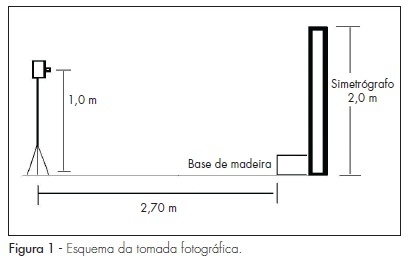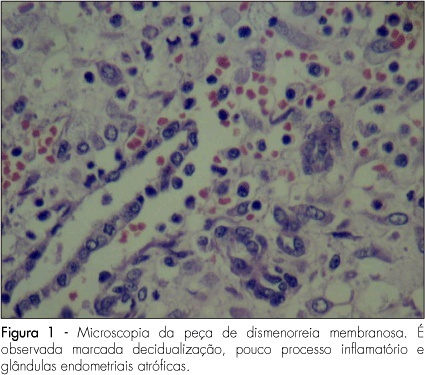Summary
Revista Brasileira de Ginecologia e Obstetrícia. 2009;31(7):353-360
DOI 10.1590/S0100-72032009000700006
OBJECTIVE: to evaluate by photogrammetry, postural changes in women with chronic pelvic pain. METHODS: thirty women with complaint of chronic pelvic pain and 37 without it, in a total of 67 women, were evaluated. The evaluation was realized through anamnesis, fixed markers in defined anatomical sites, and frontal, posterior, left and right lateral photographies. Photo analysis has been done by the software CorelDraw®, version 11.0. Quantitative values for postural analysis of the ankle, the knee in the saggittal plan, pelvis, lumbar lordosis, thoracic kyphosis, adducted/abducted scapula, shoulders, head and third finger on the floor test were obtained. The qualitative variables studied were the knee (varus, valgus or normal), the presence or not of winged scapula and leveling of shoulders. The Statistical Package for Social Sciences, version 16.0 was used for the statistical analyses. Fisher's exact test and Monte-Carlo method were used to compare the qualitative variables, and for the quantitative data, t or Mann-Whitney test was used. The comparisons among continuous data, corrected for possible confusion variables were realized by the univariate covariance analysis. Significance level was established at 0.05 or 5%. RESULTS: there were significant differences between cases and controls for protruded head (47.5 and 52.0º, respectively; p<0.0001) and for protruded shoulders (1.9 and 1.6 cm, respectively; p=0.03). The other variables did not show significant differences. CONCLUSIONS: based on these results, attention to head and shoulder posture, to antalgic postures and to the emotional factor is recommended. Women with chronic pelvic pain should be treated, taking into consideration individual muscle-skeletal changes, and social and emotional conditions.

Summary
Revista Brasileira de Ginecologia e Obstetrícia. 2009;31(7):349-352
DOI 10.1590/S0100-72032009000700005
PURPOSE: to evaluate the ovarian reserve of infertile patients with severe ovarian endrometriosis, submitted to excisional surgery of endometriomas and attended from February to November, 2008. METHODS: prospective study, including 30 patients with endometriosis grades III and IV, with severe ovarian impairment, submitted to excisional surgery of the endometriomas, and 30 patients with endometriosis grades I and II, allocated as a Control Group. The ovarian reserve was indirectly assessed, through the basal (U/L) follicle stimulating hormone (FSH), between the third and fifth days of the cycle, 12 months after the surgery. The body mass index (BMI) was calculated according to Quetelet's formula [weight (kg)/height(cm²)]. The Mann-Whitney non-parametric U test was used to compare the variables "age", "BMI" and "basal SFH" between the groups. RESULTS: there was no significant difference between the groups about age and BMI. Concerning basal FSH, in the group of patients with severe endometriosis, the average value was 7.0 U/L, while in the Control Group, it was 5.6 U/L (p=0.3), what demonstrates that the difference between the two groups was not significant. CONCLUSIONS: the surgery did not affect the ovarian reserve of patients with severe ovarian endometriosis.
Summary
Revista Brasileira de Ginecologia e Obstetrícia. 2009;31(7):342-348
DOI 10.1590/S0100-72032009000700004
PURPOSE: to compare echographical cardiovascular risk factors between obese and non-obese patients with micropolycystic ovarian syndrome (MPOS). METHODS: in this transversal study, 30 obese (Body Mass Index, BMI>30 kg/m²) and 60 non-obese (BMI<30 kg/m²) MPOS patients, aging between 18 and 35 years old, were included. The following variables were measured: flow-mediated dilatation (FMD) of the brachial artery, thickness of the intima-media of the carotid artery (IMT), anthropometric data, systolic arterial pressure (SAP) and diastolic arterial pressure (DAP). The women had no previous medical treatment and no comorbidity besides MPOS and obesity. For statistical analysis, the non-paired tand Mann-Whitney's tests were used. RESULTS: obese weighted more than non-obese patients (92.1±11.7 kg versus 61.4±10.7 kg, p<0.0001) and had a larger waist circumference (105.0±10.4 cm versus 78.5±9.8 cm, p<0.0001). The SBP of obese patients was higher than that of the non-obese ones (126.1±10.9 mmHg versus 115.8±9.0 mmHg, p<0.0001) and the IMT was also bigger (0.51±0.07 mm versus 0.44±0.09 mm, p<0.0001). There was no significant difference between the groups as to FMD and carotid rigidity index (β). CONCLUSIONS: obesity in young women with MPOS is associated with higher blood pressure and alteration of arterial structure, represented by a thicker intima-media of the carotid artery.
Summary
Revista Brasileira de Ginecologia e Obstetrícia. 2009;31(8):404-410
DOI 10.1590/S0100-72032009000800006
PURPOSE: to identify factors associated with gestation in adolescence in a State of the northeast of Brazil. METHODS: a case-control study in the ratio of one 10 to 19-year-old adolescent (case) for two 20 to 35-year-old women (controls), with a total of 168 cases and 337 controls. The variables analyzed were: schooling, marital status, origin, family income per capita in Brazilian currency, paid job, mother's schooling, and presence of adolescent's father at home. Reproductive variables such as age at the first intercourse, mother's history of adolescence pregnancy, gynecological appointments before the pregnancy, knowledge, access and use of contraceptive methods were also included in the analysis. RESULTS: the following variables were associated with gestation in adolescence: schooling lower than eight years, lack of a regular mate, and maternal history of adolescence gestation. Also, the age at the first intercourse was significantly lower among the adolescents and that they had a lower rate of gynecological appointments. Knowledge of hormonal methods and access to contraceptive methods were also less frequent among the adolescents. After the multiple logistic regression analysis, risk factors for pregnancy at adolescence were: low schooling (OR=2.3; CI95%=1.3-3.8), age at the first intercourse lower than 15 years old (OR=3.6; CI95%=2.2-5.7), history of maternal pregnancy at adolescence (OR=2.6; CI95%=1.7-3.4). The history of previous gynecological appointments (OR=0.3; CI95%=0.2-0.4) and the use of hormonal methods (OR=0.6; CI95%=0.4-0.9) were protecting variables. CONCLUSIONS: the main factors associated with pregnancy in adolescence were: the adolescent's low schooling, maternal history of adolescence gestation, lack of previous gynecological appointments and lack of access to contraceptive methods.
Summary
Revista Brasileira de Ginecologia e Obstetrícia. 2009;31(8):397-403
DOI 10.1590/S0100-72032009000800005
PURPOSE: to indentify the prevalence and risk factors of maternal colonization by group B streptococcus (GBS) in pregnant women with premature labor (PL) and/or premature membrane rupture (PMR). METHODS: two anal and two vaginal swabs were collected from 203 pregnant women with diagnosis of PL or PMR assisted at the practice along one year. Pregnant women with imminent labor at admission were excluded. One swab of each source was placed in a transfer milieu and sent for culture in blood-agar plates; the two remaining swabs were incubated for 24 hours in Todd-Hewitt milieu for further sowing in blood-agar plates. Risk factors were analyzed by the chi-square test, Student's t-test (p-value set at 0.05 and 95% confidence interval) and logistic regression. The following variables were analyzed: age, race, parity and mother schooling; culture results by source and type of culture; admission diagnosis; gestational age at admission; asymptomatic bacteriuria; gestational age at delivery; type of delivery; neonatal GBS colonization rate and immediate neonatal condition. RESULTS: prevalence of maternal GBS colonization was 27.6% (56 cases). The colonization rates according to gestational complications were 30% for PMR, 25.2% for PL and 17.8% for PL + PMR. Univariate analysis has shown that the variables Caucasian race, low level of schooling and bacteriuria were associated with higher colonization rates. Multivariate analysis showed that the presence of urinary infection was the only variable associated with maternal colonization. The GBS detection rate was significantly higher with the use of a selective milieu and collection from both anal and vaginal sources. The neonatal colonization rate was 3.1%. Two cases of early sepsis by GBS occurred in the sample, with prevalence of 10.8 cases per one thousand live births and 50% mortality rate. CONCLUSION: the studied sample showed high maternal colonization rates by Streptococcus agalactiae. To increase GBS detection rate, it is necessary to use a selective culture milieu and to combine anal-rectal and vaginal cultures. There was a high incidence of early neonatal sepsis.
Summary
Revista Brasileira de Ginecologia e Obstetrícia. 2009;31(7):326-334
DOI 10.1590/S0100-72032009000700002
PURPOSE: to analyze the association of the mother's age, the perinatal outcome and the delivery route. METHODS: information about all the patients attended at the Service of Obstetrics and Gynecology of a tertiary university hospital in Maranhão, from July to December 2006, was analyzed. Patients have been allocated in three groups: adolescents (10 to 19 years old), adults (20 to 34 years old), and aged women (>35 years old). Variables studied were: skin color, schooling, marital status, family income, parity, number of appointments during pre-natal care, gestational age at the onset of pre-natal care, delivery route, Apgar index at the fifth minute and birth weight. Data were processed by the Epi-info program, version 3.4.1, and the association among the variables was analyzed by the Odds Ratio (OR) or the cross product ratio, with confidence intervals (CI) of 95%. The significance level was 0.05. RESULTS: among 2,196 patients, 25% of deliveries occurred in adolescents, 69% in adults and 6% in aged women. Among the adolescents, there was higher risk of prematurity (OR=1.46; CI95%=1.14-1.88), and low birth weight (OR=1.47; CI95%=1.13- 1.90), higher incidence of normal delivery as compared to the other groups (65.2%), besides the association with late onset of pre-natal care (OR=1.86; CI95%=1.43-2.43), lower number of appointments (OR=2.03; CI95%=1.57-2.63), and use of abortive procedures at the onset of gestation (OR=2.34; CI95%=1.38-3.98). Among aged women, there was strong association with diabetes mellitus (OR=9.00; CI95%=3.18-25.19), pre-eclampsia (OR=4.38; CI95%=3.02-6.34), premature membrane rupture (OR=5.81; CI95%=3.08-10.89), besides a higher chance of presenting Apgar index lower than seven at the fifth minute (OR=2.90; CI95%=1.37-6.01), and higher ratio of cesarean section (60.3%). CONCLUSIONS: pregnancy in adolescence is associated to late onset of pre-natal care and few appointments along it, use of abortive procedures at the onset of gestation, low schooling, no mates, low birth weight, prematurity, and lower incidence of cephalo pelvic disproportion and pre-eclampsia. Among aged pregnant women, there was association with diabetes, pre-eclampsia, premature membrane rupture, Apgar index lower than seven at the fifth minute and higher ratio of cesarean section.
Summary
Revista Brasileira de Ginecologia e Obstetrícia. 2009;31(6):305-310
DOI 10.1590/S0100-72032009000600007
PURPOSE: to present a series of cases of membranous dysmenorrhea. METHODS: all the patients selected were under diagnostic suspicion, after being clinically attended in a private medical office due to the report of painful dysmenorrhea associated with spontaneous elimination of elastic material with uterine shape. Only relevant facts about the pain condition have been described, together with the present and previous medical history and life habits. The material eliminated was forwarded to the pathology laboratory, where the macro and microscopic analyses were done. Cases with no confirmation of membranous material elimination were not selected. After the diagnostic confirmation, literature up to 2008 was carried out using the MeSH method, with the words "membranous dysmenorrheal". RESULTS: three cases of dysmenorrhea were transcribed. Besides the characteristic picture of pain and vaginal elimination of elastic material, all the cases were associated with the use of hormonal contraceptive methods. CONCLUSIONS: despite the fact that there are only sporadic reports of cases of membranous dysmenorrhea in the scientific literature, this etiology must be considered in cases of pain associated with vaginal bleeding plus elimination of elastic or solid material. The final diagnosis depends on anatomopathological exam, which should not be dismissed. We highlight the need for more discussion about this pathology, to keep the professionals updated with the aim of exerting adequate diagnosis and therapeutics.
